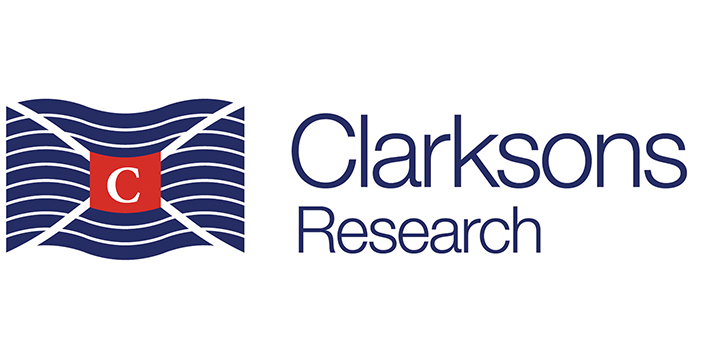As emissions regulatory and policy decisions continue to “ramp up” across maritime, Clarksons Research is closely tracking uptake of “green” technology that will impact the shipping industry’s 883mt (2021: 855mt, 2008: 1,028mt) and 2.4% contribution to global CO2 (and 1.8% of all GHG). Summarising the latest trends in technology uptake and fleet renewal from our Fuelling Transition report and monthly data series, Steve Gordon, Clarksons Research Managing Director, commented:
Across first half 2022, a record 268 newbuild vessels orders (of 22m GT and USD 38bn) were alternative fuelled. This constituted 61% of all newbuild orders placed by tonnage, 38% basis vessel numbers and 68% of overall contract value.
Excluding LNG carriers, there were 174 alternative fuel capable units ordered of 11.9m GT and $18.4bn ordered in the 1H, equivalent to 46% of orders basis GT capacity (29%and 51% in numerical and value terms).
59% (226 orders of 21.0m GT) have been LNG dual fuelled,), 1.6% methanol fuelled (5 orders of 0.6m GT), 0.3% of orders have been ethane fuelled (2 orders of 0.1m GT) and 0.8% include battery hybrid propulsion. In addition, a further 16.3% of orders were “ammonia ready” (66 orders of 5.8m GT), 0.8% of orders were “LNG ready” (12 orders of 0.3m GT) and 0.1% of orders have been “hydrogen ready” (3 orders of 15k GT). Please note these add up to excess 100% of the alternative fuels capable total: there is an increasing trend towards multiple fuels / fuel ready to provide future optionality. For context, in 2021 31.7% of newbuild tonnage ordered was for alternative fuel capable vessels (459 units), up from 211 orders in 2020 and 46 orders in 2016.
Uptake of alternative fuels has continued to progress, with 4.7%* (2021: 3.9%, 2017: 2.2%) of the fleet on the water and 41.3% (2021: 27.8%, 2017: 11.8%) of the orderbook in tonnage (GT) terms capable of using alternative fuels or propulsion. We are projecting that 5% of global fleet capacity will be alternative fuelled by the start of 2023.
Of the orderbook, 37.3% of tonnage is set to use LNG (741 units), 2.2% to use LPG (87 units) and 3.3% due to use other alternative fuels (c.220 units; including methanol (24), ethane (9), biofuels (7), hydrogen (6) and battery/hybrid propulsion (c.180)).
Over 307 ships in the fleet and 98 on the orderbook are designated “LNG ready”, while there are now 115 “Ammonia ready” and 8 “Hydrogen ready” vessels on order.
Scrubbers are now fitted to over 4,730 ships in the fleet (24.5% of total GT). While scrubber retrofitting activity has slowed (June 2020: ~100 per month, June 2022: ~15 per month), newbuild uptake grew slightly in 2021, with 268 newbuild orders for scrubber-fitted units reported across the full year, including 198 containerships; 26 scrubber fitted units have been ordered in 2022 so far. The current price differential between HSFO and VLSFO is significant (Rotterdam/Singapore: $310/$513), close to previous highs (Jan 2020: ~$330).
We expect the share of global tonnage with a scrubber to grow marginally to 24% by start 2023.
Energy saving technologies (ESTs) have been fitted on over 5,300 ships, accounting for 23.6% of fleet tonnage: including propeller ducts, rudder bulbs, Flettner rotors, wind kites and air lubrication systems.
‘Eco’ ships make up a growing share of the fleet (‘modern’ eco vessels now 28.3% of total GT) with implications for earning potential, asset values and increasingly “tiered” and complex charter markets. For context, we estimate that 25.9% of global tonnage was “eco” twelve months ago, compared to 13.0% five years ago and a projection of ~30% of global tonnage by start 2023.
The average age of the world fleet is increasing. For the bulk carrier fleet it is 11.4 years (vs 8.7 years five years ago), for tankers it is 12.0 years (2017: 10.3 years) and for the container fleet it is 14.1 years (2017: 11.6 years). 28.2% of global tonnage is today aged over 15 years. We estimated that under CII, around 40% of today’s tanker, bulkcarrier and container fleets will be D or E rated if they are still trading in 2026 and have not modified speed or specification.
The overall orderbook as a % of fleet capacity is ~10% – the figure is 27.8 for containers, 7.2% for bulkcarriers and 5.2% for tankers.
‘Green’ port infrastructure is continuing to expand: currently 148 active LNG bunkering ports (and 95 planned facilities), while over 1,500 vessels fitted/set to be fitted with shore power connections; Clarksons Research are also collecting data on ammonia and hydrogen infrastructure.
BWMS retrofit programme ongoing: majority of fleet tonnage (65.8%) now BWMS-fitted.
*in number of vessels this is ~1%.
As pressures build globally to find solutions to moderate climate change, the Green Transition will cause fundamental change to shipping, trade, offshore and energy. Clarksons Research are committed to providing data and intelligence to help frame the critical decision s that s takeholders across our industry will need to make to facilitate the Green Transition. Clarksons Research will continue to support its clients to (i) understand, in commercial terms, upcoming technical regulation (ii) track technology uptake by the shipping industry (iii) analyse the impact of environmental policy, regulation and technology on market supply / demand, asset values, vessel earnings and companies and (iv) project scenarios for required investment, including newbuildings.
Source: Clarksons
The opinions expressed herein are the author's and not necessarily those of The Xinde Marine News.
Please Contact Us at:
media@xindemarine.com


 Ningbo Containerized Freight Index Weekly Commentar
Ningbo Containerized Freight Index Weekly Commentar  Ningbo Containerized Freight Index Weekly Commentar
Ningbo Containerized Freight Index Weekly Commentar  Ningbo Containerized Freight Index Weekly Commentar
Ningbo Containerized Freight Index Weekly Commentar  BIMCO Shipping Number of the Week: Bulker newbuildi
BIMCO Shipping Number of the Week: Bulker newbuildi  Ningbo Containerized Freight Index Weekly Commentar
Ningbo Containerized Freight Index Weekly Commentar  Ningbo Containerized Freight Index Weekly Commentar
Ningbo Containerized Freight Index Weekly Commentar